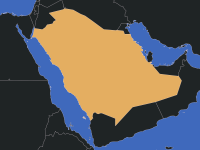State of Saudi Cities 2016

Sponsor: UN-Habitat Research and Capacity Development Branch
Project Duration: 2016
The prosperity of Saudi cities is dependent on many factors and variables. In support of the national goal of creating balanced and sustainable growth within Saudi Arabia a study was undertaken to analyze the level of prosperity in Saudi cities. The study was supervised by the Head of Research and Capacity Development Branch of UN-Habitat with direct supervision from the Future Saudi Cities Programme Manager as well as in consultation with the Chief of Global Urban Observatory. The study used data gathered through the recently development City Prosperity Index (CPI), current and historical information and key social, cultural and economic indicators.
The report was divided into five chapters with the themes: Dynamics of Urbanization; Economic Development and Diversity; Housing, Public Spaces and Living Together; Environment and Risk Management; and City Prosperity Index for Saudi Cities. The report identified national and regional development trends and highlighted key opportunities and challenges to balanced growth in accordance with international instruments and norms such as the Sustainable Development Goals, specifically Goal 11: Make cities inclusive, safe, resilient and sustainable. Dividing cities into first, second and third tier designations based on population size provided the basis from which to compare productivity, infrastructure systems, quality of life, equity and inclusion and environmental sustainability.
This project emphasized the need for national and local government bodies to create and manage data which can be used in the development of metrics. Understanding trends and measuring the impact of policies is a key function of effective urban planning and is increasingly easier to be performed in realtime as cities become ‘smart’.
This report will be available after official publication by UN-Habitat.
Back to Library
